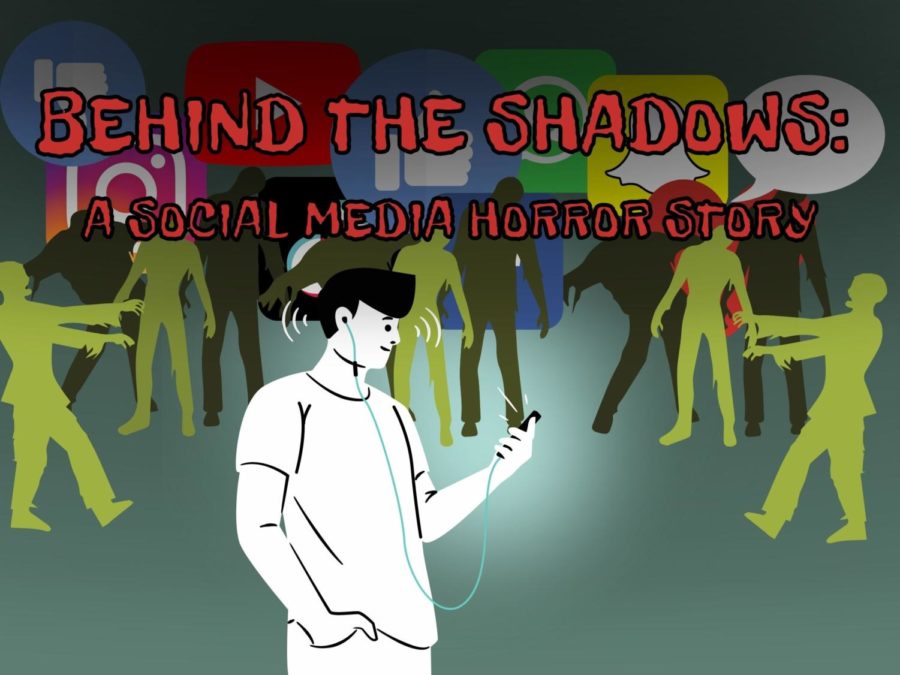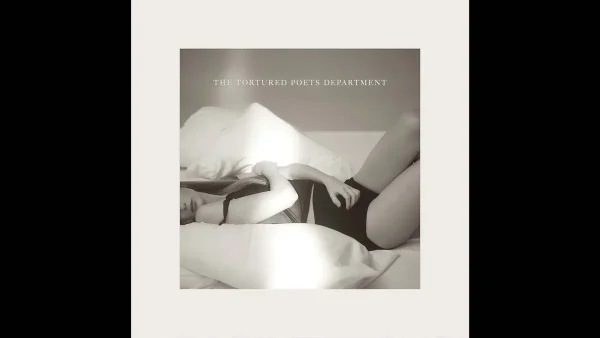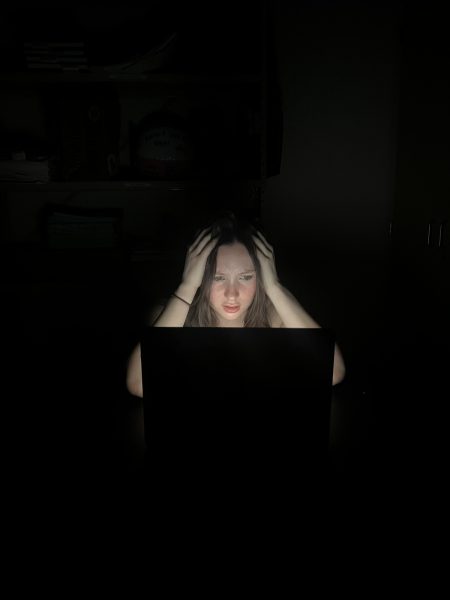Behind the shadows: a social media horror story
How social media has impacted students
My generation really doesn’t know a life without technology. All it takes is the press of a few keys and the world is at your fingertips. Social media has grown exponentially in the past two decades. Facebook was created in 2004 and has since gained more than 2 billion members. With the creation of apps like Instagram, Snapchat, Youtube and TikTok, there have never been more ways for people to connect online. However, there are drawbacks and risks to social media. Many that are not known or talked about enough, like the mental health effects and thousands of people watching your every move.
Prior to the world of social media, people could view or read about celebrities in the latest issue of Hollywood magazine. Now all it takes is a quick scroll on Instagram. Consistently seeing the reinforced idea of the so-called “perfect body” can drill unrealistic body standards into young peoples’ minds.
According to Pew Research Center, 69 percent of adults and 81 percent of teenagers use social media. It no longer takes hours of careful photo editing to make someone’s skin seem flawless. Instead, anyone can use a simple filter on their smartphone. While adults may be more aware and accustomed to these dangers, teenagers, especially those who compare themselves to others are more susceptible.
The image of the “perfect” body can lower teens’ self esteem and affect their mental health and confidence. According to the National Association of Anorexia Nervosa and Associated Disorders, 81 percent of ten year olds are scared of being “fat” and eating disorders affect at least 9 percent of the United States population. Eating disorders have the highest mortality rate out of all mental illnesses collectively. While there is no single cause for eating disorders, social media can certainly have a negative effect on someone suffering from the illness.
It is possible that a third of TikTok’s audience are children under the age of 13, according to three former employees. Under TikTok’s policies and guidelines, if a user is under the age of 13 they are put under TikTok for younger users. The filter, which supposedly shows only clean videos and comments, restricts younger users from searching and posting their own videos. However, all it takes is a false birthday to be able to access the full content of the app, where inappropriate content can easily be shared for thousands to see before it is taken down. For example, the statue Momo made an appearance on children’s Youtube videos in 2018. The video induced nightmares in children and encouraged them to engage in self harm.
Younger children are also more susceptible to cyberbullying and predators. This becomes especially dangerous when children are unaware of these dangers and the risks of talking to strangers online. However, parents should be more aware of the risks of social media. Teenagers often learn about cyberbullying through school, but this is often not enough to prevent these events from happening.
Facebook knows more about social media than the average person. A whistleblower from Facebook recently released hundreds of documents revealing that Facebook knows exactly the kind of negative harm that it does to its users, especially young women, and chooses to ignore it.
If apps like TikTok are made up of minors, what happens when trends that are deemed appropriate spread like wildfire? The recent “Devious Licks” trend that started on TikTok involves stealing an object from school, or from your home, and posting a video of removing it from your backpack. In some scenarios, the objects stolen have been taken to the extreme. Students have stolen printers or sinks from their schools. Some schools have threatened to take legal action against the students because of the challenge. The Devious Licks trend is one of many trends being promoted to minors that not only endangers themselves but others as well.
In September of 2020, four percent of surveyed Americans said they’d heard at least a fair amount about the phrase “cancel culture,” including 22 percent who had heard a great deal about it. The concept of cancel culture is controversial to say the least. Cancel culture usually refers to calling someone out, usually celebrities or people famous on social media, and holding them accountable for their actions. However, some believe that forgiveness isn’t enough especially when repeated mistakes are made, and that the person’s platform and sometimes business should be pulled off the web wholly and not be permitted to make content.
Popular YouTubers, actors and authors can get into scandals and not have to worry about being fully “cancelled” or their sales declining much. However, smaller or younger influencers can be at risk of sharing their opinion. If they are trying to start a small business or trying to sell something, backlash can detrimentally affect their business and also their mental health.
Social media is created in a way that you see what you want to see.. Your preferences guide your experiences. It’s easy to find people that agree with you online without seeing any content from the opposing side, but it’s even easier to see false information. An article can be shared on Instagram with the click of two buttons, which makes it extremely easy for false information on issues such as the COVID-19 and the vaccine. Apps can take false information down quickly, but misinformation spreads even quicker. Misinformation can increase fear within issues such as the vaccine for people concerned about it.
On the flip side of this, positive or important news can be shared quickly and easily through social media. Movements like the Black Lives Matter movement easily gained traction through media. It felt like everyone’s Instagram story had articles and posts about the movement.
While social media can negatively affect teenager’sconfidence, it can also do the exact opposite. Social media has allowed “body positivity” influencers to step into the spotlight as well. Through social media, anyone is able to find a community or influencer they feel they connect with, something that would be impossible before the internet. Whether this community be based on interest, race, religion, identity, or more.
Social media can also be used to keep in touch with friends and family. Especially when distance is an issue, apps like Facebook and Instagram can make it easy to catch up with your loved ones.
Overall, social media has its downsides. From lowering self esteem in teenagers to cancel culture and fake news, there can be some serious consequences to having social media, especially for youth. I personally believe that no one should have social media if they are under the age of 13 or at the end of middle school. I believe people who are not yet teenagers don’t know the risks of social media and it is difficult for parents to properly monitor their children’s social media accounts. Things like YouTube and video games are fine for kids, especially if parents don’t allow their kids to chat with strangers online and only let them play with friends. Childhood is meant to be a time to have fun and make mistakes, not constantly worry about the amount of likes you get on your post or if you are skinny enough.













